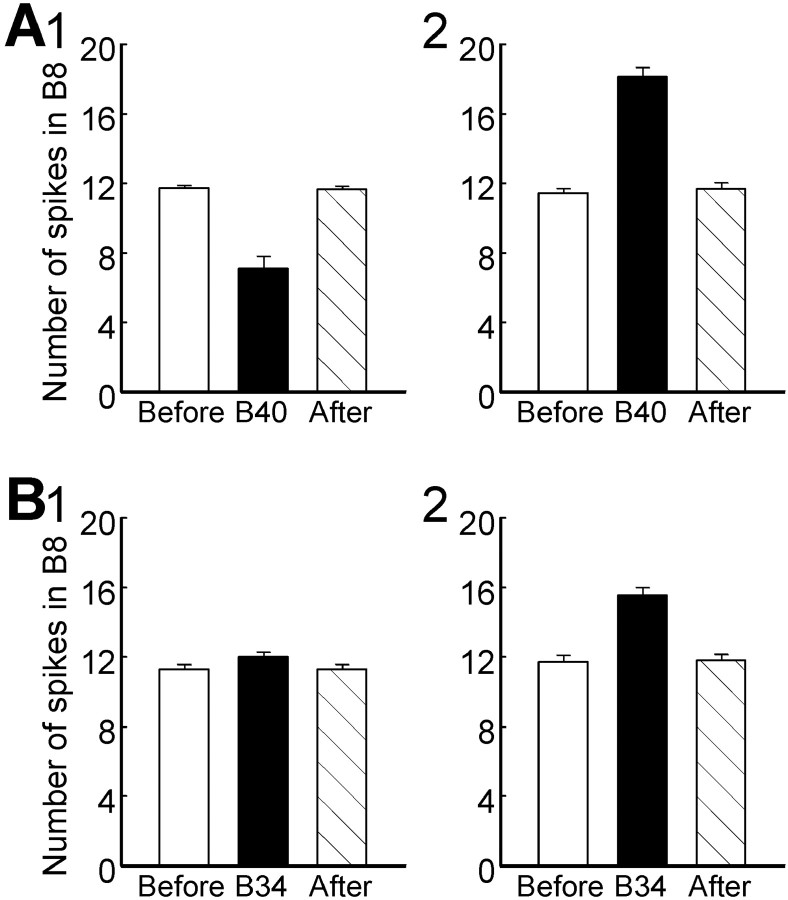Fig. 7.
Plots of group data showing the effect of B40 and B34 activity on the excitability of the contralateral B8. This figure summarizes the experiments shown in Figure 6. The four bar graphs inA1 (n = 11), A2(n = 9), B1 (n = 6), and B2 (n = 6) correspond to examples shown in A1, A2,B1, and B2 in Figure 6, respectively. When B40 or B34 was fired together with the current pulses injected into B8, B40 activity decreased B8 excitability (represented as number of spikes in B8 during the 3 sec current pulses, A1), whereas B34 activity slightly increased it (B1), suggesting that the fast IPSPs from B40 to B8 are more effective than those from B34 to B8. When B40 or B34 was fired before the current pulses injected into B8, both B40 activity (A2) and B34 activity (B2) increased B8 excitability, but the increase induced by B40 was larger than that induced by B34, thus suggesting that the slow EPSPs from B40 to B8 are more effective than those from B34 to B8. See Results for statistical analysis. Error bars indicate SEM.

